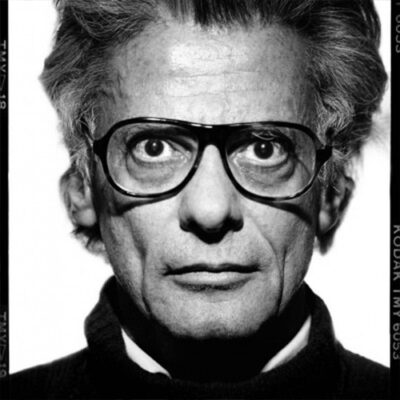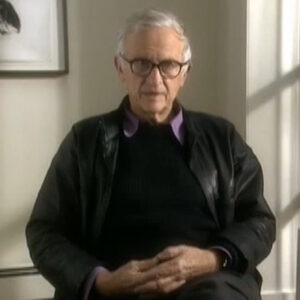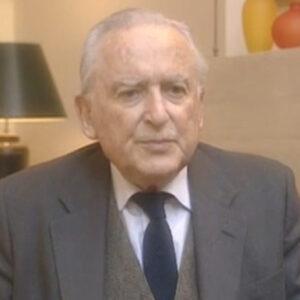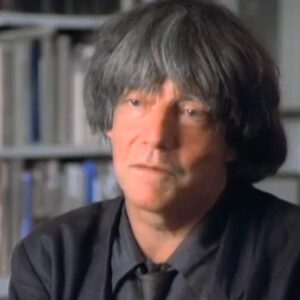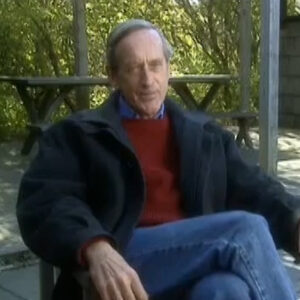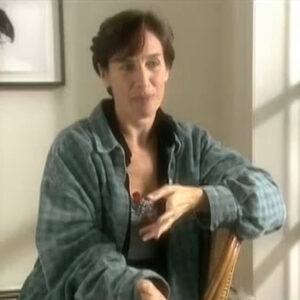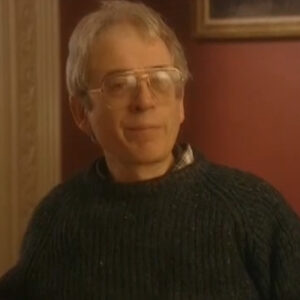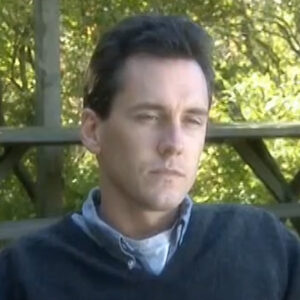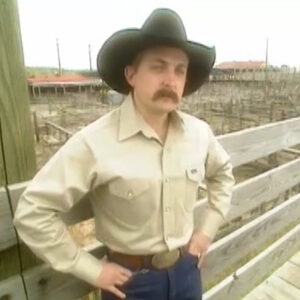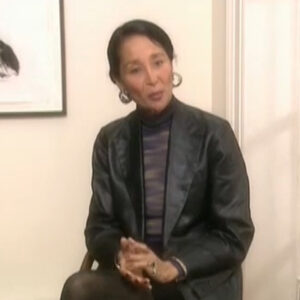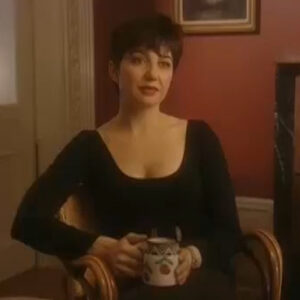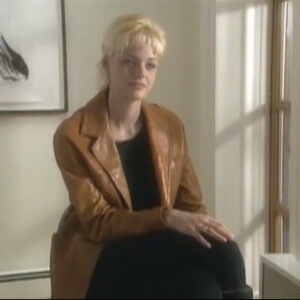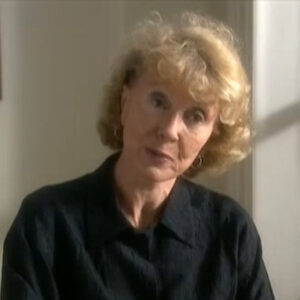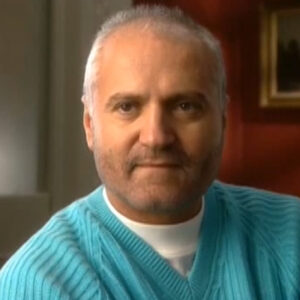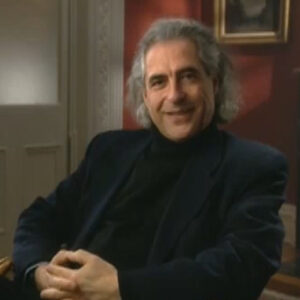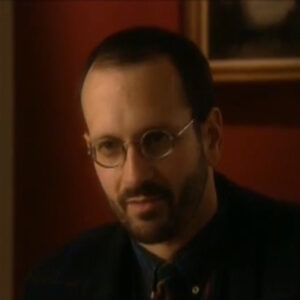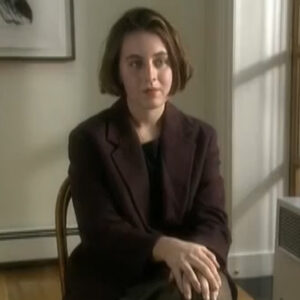Speaker Well, Dick’s contradictions. It’s have to stem with the from the fact that Dick feels incredibly blessed. Is anybody with talent does. He’s been given the gift and he’s compelled to honor that gift. He’s driven and part of the gift, the blessing of it is that you can do these things. Part of the terror of it is that where does it come from? How do I control it? How do I discipline it? What happens if it goes away? And in my friendship with Dick, which goes back nearly now 30 years, I’ve only known Dick as incredibly generous and supportive of at the time he met me. A young Stripling rider, spiring, not even having written a biography. Writing for a giveaway paper called Manhattan is that you put in the hallways of of of apartment buildings. And he found me. But what was interesting about that connection was the generosity, the the ambulance, the the fun of Dick, the the encouragement that he just in his in his presence gives. And that’s very essentially Dick. But when I moved to New Yorker, cut to 30 years later and was editing for the first special issue they ever did, which is on theater. I had my first professional encounter with Dick and we had planned the magazine. It was very exciting. And I needed two or three or four images of playwrights I remember, and giving them a menu and saying, Dick, this is what we’d like, would you just do it? And first of all, Dick said, well, I don’t know if I can. I mean I mean, I’m very busy. And then he said. And then then what came back was what he was going to do. And I remember thinking, this is why he’s great.
Speaker He’s willful. He insists on making his own statement in his own way. And instead of arguing with him, I just sort of said, OK, Dick, do it your way. We got a wonderful spread. It wasn’t what I wanted. It wasn’t what the team had asked for, but it was what he was going to give. Now, that creates incredible tensions and the complexity is of him, which I love. I don’t I don’t judge it badly. But he’s in the incredible generosity and and warmth on the one hand. And when you get into the area of the art, which is private, which is we all know, all of us who do sort of writing or solitary things, which which he’s really speaking to himself and his tyrannical inner voice, wanting to get it right. Wanting to be great at what he does. And he is great at what he does. When you engage with that, there’s no argument. There’s no discussion.
Speaker It’s it’s it’s a completely controlling, autocratic, non-negotiable thing.
Speaker And, you know, you can you have to take the with dick with anybody. You have to take the, you know, the sweet with the bitter. I mean, that’s who he is. And he’s I mean, he is wonderful. And yet when the result was wonderful in the end. Of course, I have to say that his pictures, what he does, what he gave to our little issue on that occasion and in actually any occasion was enormous. And I don’t have to say he was right to do what he did. But the encounter was difficult, and it’s the only time. Ordinarily. It’s in any situation I’ve ever been with. In fact, I have a letter like that. Where Dick, in a moment of just. I guess Reflexion wrote me a letter saying, you know, consider yourself my son. I mean, I’ll do anything for you. And at the time, I, I was in England and I was in a bad place. I mean, it meant I can’t tell you what it meant. My father died in 1967. I had no older person in my life. And it’s an odd thing to say it. It’s no if you if you have or if you’re in a public sphere doing something. The desire to be good as an artist and to be good as a person are two very conflicting things. And who are you going to talk about that with? Because there you have to talk to somebody who’s been there, who knows about it, and nobody’s been there to that. In terms of public visibility, more than I have, in my view, more LaVena. And so he’s he was a he’s been with a lot of the conversations we’ve had have been. How do you mediate between terror and accomplishment? How do you how do you keep going? How do you reinvent yourself for yet another challenge? How do you find the energy? Is it worth it? Where do you go for your stimulation? I mean, Dick is always looking. He’s always reading. It’s always curious. He’s always looking for something important. Was one of the assets of one of his antenna or what make those portraits so incredible because he very often finds people ahead of the curve and they become successful. Or conversely, his own sensibility, which is fed by so much other than what the category that he’s usually in conventional journalism. Put in which is fashion. I mean, he’s fed by so much rich intellectual things that theater is reading music, the history of art and photography, all of that means that when he comes to a subject. He’s imposing on that subject his own worldview. And that’s why, if you want one, is when you look at his portraits of coward, Bert La, Buster Keaton, Jimmy Saville, Jimmy Durante, Leonard Bernstine, any heat he imposes, which is what you want from any artist, a point of view that’s informed, which is what I like.
Speaker He’s just not sort of, as it were, bringing someone into the studio. And that’s famous face is just photographed. I mean, he’s actually looking for something that he’s actually found in the work and the artist and that’s that that sort of tension between the the artist he’s facing and his response to to that work is the excitement. That’s the UN, the invisible drama that’s in the picture and why those pictures are so important and why he is, in my view, sort of the master of his particular craft.
Speaker Well, Dick, I remember Dick and I sitting Dick has, in my view, the nicest apartment, the nicest space I’ve ever been in in New York in terms of just the ease, the comfort, the playfulness of this big room. And we very we sometimes he’ll say, come over and I’ll come over. And he’ll have had he’ll cook or he’ll have had his maid prepare something and he’ll finish it off. You know, phishers, I think we’ll sit at this table with amid building blocks of his grandchildren, portrait of bacon and mounds of Harry’s Bar past. And, you know, in his sort of high tech shelves and, you know, the clock is running. He’s been. In the sense that he was a wunderkind, he’s reinvented himself with every book. He’s found a new challenge. And I remember going there the day he’d signed this 10 book contract, the day it was in that period. And, you know, it was like it was as if he was saying, look, I can’t die. I’ve got to finish this contract. Right. And he’s I’ve never met anybody who works to that schedule. He’s got stuff to do. He’s he’s got people to photograph. He still wants to come. I mean, every everybody in their art form is trying to fathom this monster called America and what he is particularly well-placed to do. Is to chronicle. The in the in the in the famous and the famous, the the greatness of individuality. And the barbarity of the same ethic that it can create, the the the the Bernstein’s, the Stravinsky’s, the whatever, and he can also create those terrible ravaged faces of those wanderers in the American West, you know?
Speaker And so that as if you’re looking for a an over.
Speaker That has a sort of sweep of the culture over a series of decades through a series of classes and levels of attainment. There is only one place you can go. There’s only one person who’s been doing it, and that’s him. And people very often forget that of that. He is like our Matthew Brady. He is the repository of the visages, the the public.
Speaker Persona’s. And I’d like to talk about that of the century, really?
Speaker Oh, although our half century. And it’s an enormous task. And it’s not never ending so that the terror to come back to that is keeping his strength.
Speaker Can he keep his strength? Can he keep going? Can he have a new idea? Why is it that I don’t think I’m telling tales out of school here? Because I think everybody I know who tries to do something in the world finds us. Why is it. When he’s doing something good, it doesn’t necessarily make him happy that the that the that the contradiction between.
Speaker Happiness. And achievement. It is vast.
Speaker And how do you mediate between the will to be and the will to do? That’s the issue. That’s the terror. And I have to say, in my experience with Dick, he faces that enormous respect, that terror and dignity and deals with it. You know, he lives on his own. It’s hard to do when you carrying this load. I mean, also, you could say that he’s learned that when you’re so focused on your work, maybe you should keep yourself away and enter the world when you’re prepared. To enter it and not put the burden of your own self-absorption on anyone else. But anyway, he he that woman, his bedroom is an amazing thing. It’s a cocoon of him with all the racks of his. This rich, rich texture, which is dick of wonderful sound that he wore. You can’t go into his bedroom. I try. I once had an assignment to write about this wonderful house that he’s in. And he said, OK, I’m going to go where I want to see every room. And I want you to tell me the story of everything, this room. We had a ball, but when he got to his bedroom, he said, look, I’m going to die here and look at this. And he, you know, the television that he wouldn’t let me go without showing me this wonderful small speech, which perhaps you should see. Orson Welles, his acceptance speech of his honorary Academy Award, where Orson Welles essentially sells it, you know. Thank you very much. You know, stuff. You know, you missed it. You didn’t see me. And it’s the fighting spirit of Welles, the maverick. And although Hamadan is depicted by the people who dislike him as a as a kind of establishment figure, there is that kind of maverick quality in him that there is that sort of fighting thing. He hasn’t. He hasn’t and will probably never. That keeps him going. He hasn’t made the world capitulating to him yet. And he’s going to go for it. And there, you know, I’m I love him for that. You know, he’s he’s excited. You can. He has a sort of buoyancy. That’s thrilling. I hope I just hope when I’m his age, I want life as much as he does.
Speaker Yeah.
Speaker With you talked about the earlier disappointments in driving places.
Speaker Yeah. What would you just remind me of?
Speaker Yeah. Another thing another touching thing about Dick pick up on that. I mean, what what drives him and the disappointments in his life?
Speaker Well, one of the this is this is a adjunctive terror’s. One of the touching things about Dick, who is incredibly articulate and and it both in in in in terms of his vocabulary and actually in terms of his writing, is that he doesn’t think he is that he had never gotten to college, thinks he’s very, very nervous. I remember when he had a show at the V.A. a few years ago, my companion, Connie Booth and I were in London and we came to the show with him, which was wonderful, was like it was our own fashion. And he gave us a kind of personal tour of the show with everybody around. And we had like a lesson in the history of photography. But suddenly the the the press descended on. And pushed him, pull them away. And somehow I was talking to Connie and he came over to change and I said, what did he tell you? The history of photography.
Speaker You talk to them and, you know. And it was as if he didn’t know he was this man who knew it all. But when faced with, you know, official presentation, he just distrusted his instinct.
Speaker And I find that incredibly touching because, you know, he it’s not him, really. It’s you know, maybe he just panics. But, you know, in in in essence, anybody who is an overachiever will understand that what you’re trying to kill is a very early memory.
Speaker What you’re trying to defeat and annihilate, which never is quite annihilated, is some sort of inferiority which. And I think that the index case, as far as I read it, I could be wrong. You know, as you say, it was the failure to some extent academically, having conceived himself, I think, early as a poet and then found that, as it were, words were not his language, that then he moved into this other sphere, which was his language, but he didn’t lose because he was a stranger to it, because he hadn’t planned it, because he felt unprepared.
Speaker It’s never he’s never securing it.
Speaker And so this whole his whole life has been a way of in which all over achievers lives their way of trying to find the place where you can rest in your achievement. And be at peace with it. And it’s one of the distinguishing things about American life as opposed to European life, I found because I live in Europe. Is that the nature of American individualism, which is different from European individualism, is that you never can rest in your achievement.
Speaker The culture doesn’t allow it. You always have to prove yourself again. Re reinvent yourself again, which accounts for the the drive of the culture to partially.
Speaker But it also accounts for the unhappiness that culture, because you can never be satisfied. Nothing is good enough. You always have to.
Speaker You always are the self in it. In the destiny of me. Right. The self always has to be bigger. Go far. Test itself again. There’s no stopping. And. And so that’s very much.
Speaker That’s very much part of this anxiety.
Speaker This is the terror, by the way, is not automated.
Speaker It’s not it’s not all negative because out of that way, you master that is through accomplishment. You know, if you’re terrified about what am I going to do next? You go out and do something. And so it’s part of the gasoline that drives this amazing, sort of this amazing engine.
Speaker You know, it’s a it’s useful to dig.
Speaker But I you know, he worked so hard very often the momentum of his life, which has been made into a movie which is kind of glamorous and extraordinary to see his, his, his.
Speaker He lives above the shop, which there’s a family tree. I don’t know if you’ve seen that downstairs where there’s actual. Framed photograph of the chain of command with the patriarch Dick at the top and all these people that eat together work together downstairs in the firehouse there. It’s a sort of wonderful, good Mudlick thing. On the other hand.
Speaker What happens, and I think I’ve never seen it happen to someone more than Dick, is that you become you become famous and then the momentum of your celebrity lives, you rather you living it. So that certain point, Dick, is simply being swept along by what he’s created. And it’s his dilemma is how do you stop?
Speaker How do you stop long enough to breathe, to take to take some sort of assessment of what what where you need to go and to keep going.
Speaker You know, so that that’s the area of anxiety. And it’s a it’s a it’s an area that one talks about and thinks about. It’s a very serious guy.
Speaker Yeah, just a little bit more about what he said, though. It is the paradox of those earlier disappointments really pushing him out into work.
Speaker I can’t remember you.
Speaker Perhaps you can just refresh my memory when you said that doesn’t mean disappointments in my personal life.
Speaker I always fell into places. Oh, yeah. Yeah, yeah. Right. I don’t know the story of Dick’s marriages. I mean, I met Evy, who was charming. And I know he had another marriage, too, though.
Speaker But.
Speaker Dick and I sympathize with this in times of personal crisis, could always find his bliss in work. You know, he could always lose the world and go into this very solitary, exciting, pleasurable world that was in his control, rather, when the world outside the photographic studio was out of control.
Speaker And there was there’s great source and comfort in that. And so very what what he was saying about when his when his emotional personal life was chaotic was his work never stopped. In fact, the more the chaos to a certain extent, the more he needed to escape from that chaos so that he could put his what was not tainted by that? That that sort of sense of failure and confusion into this work. And it drove him that he needed the work. And so that there was a urgency to it because of the failures in his personal life or what he perceived to be the failures in.
Speaker Caught up in that interview about a mellowing, he said there was a thickening of a wall between myself and emotional. A different place right now.
Speaker Can I just think about that? It was really amazing. Yeah, when we when we had this last interview, it was interesting. Because Dick has always been on this journey, and I think that the the show at the Whitney, the his own book and evidence and Adam Gopnik essay. I think if I think I think that part of the mellowing was starting starting to feel that. If it hadn’t gone away, that it was going to it was going to be here, that he’d sort of broken through the stereotype of fashion photographer and been accepted by some anyway, but the people that he cared about in in a much larger discussion. And also, it has to do with that biological clock. You know, he was starting to think about other things. He was starting. He’s worked very hard for his wisdom and.
Speaker I think I think he felt that he he felt that he wasn’t as prey to his feelings of inadequacy as he had been, and I think that’s what he what he meant. I hope that’s OK.
Speaker These these photographs are of my father as Estragon and Waiting for Godot.
Speaker And. They’re extraordinary.
Speaker I’m I’m a very teary eyed seeing these because. The picture, what Avodart was obviously going for it with dad is Estragon was his pain, sorrow, the the the terror that we were talking about, the underneath the the grimace of the clown is so much so close to the.
Speaker The joy, sorry, the grimace, the clown is so, so close to the joy. And what I loved, what the what the picture does is beside it goes, of course, straight to the heart of Beckett. But more to the point, it goes straight to the heart of my father, which is the picture was a prayer, but it was a it was also grief struck and.
Speaker These other.
Speaker Other.
Speaker Shots of dead are all going for that.
Speaker They’re all going for the the aspect of him which was archetypal and which has survived, which is this great cavorting wound that people paid to see that was that and that that sort of made them laugh.
Speaker And it’s just it was it’s very moving for me to see that because Dick hooked up with that Dick found that my father and found an image which condensed that it’s very easy to make take a funny picture of funny man. But he responded to that.
Speaker And incidentally, there is a poem by Beckett on Dick’s bathroom mirror so that the whole that Beckett’s whole existential discussion is with Dick as we speak and was with Dick in 1956 when he took this picture of my father. I don’t think that there’s anybody that I know who understands performance and the spirit behind it better than Avidan.
Speaker And when he got up dead, when one Abbadon brings and I know because I’ve been photographed by him as well, when Avidan brings you into his little theater, which is just a white background and his camera and people in there, you come with expectations of him and you also come with your expectations of you.
Speaker And there is a sense of tension, which is a theatrical tension. It’s like you’re going to test yourself against his camera and his perception of you. Some people want to hide from that because they don’t want to be seen. Some people, I’m afraid I’m in this category, would like to die right down the camera, you know, but but the but the fact is that that’s a theatrical engagement. And what Avedon knows and why it’s such an interesting encounter is Avidan knows that people are going to try to show themselves off to him, show their idealized self. And there’s a kind of boxing that’s going on.
Speaker Now, why this is interesting and it’s something that I’ve thought about a lot is if you compare say that the way people. Present themselves in the 19th century and how they do it in the 20th century, where media and the notion of celebrity has changed from, you know, accomplishment to visibility. People are much more aware of the camera, much more used to dealing with the camera. So the presentational self.
Speaker And the nature of presentations changed. And so evidence method and what he’s going for. I think I’m. Generally reflect our centuries or our assets or in our half centuries changing idea of celebrity changing idea of presentation of self.
Speaker Changing idea of self, since so much of the the the self is a. Is a.
Speaker Conceived with the notion of media, you know, you know, Dick’s understanding, I think, you know, I, I agree with is that personality and the word itself means persona means mask. Their personality is a is a kind of fiction. And the individual seeks confirmation of the particular fiction that he wants to project. And insofar as you can get agreement about this fiction, he has some large part of him is is confirmed in his invention. It’s the self invention of individual selves, that aspect of them that they impose on some essential nature.
Speaker And that contradiction, which Avidan has always kind of probing because he’s self embedded, he understands that personalities have been, and especially now in the age of celebrity. It’s a completely managed where the personality is completely hidden behind some some image. So it’s the contradiction. And why so good about with the article people who are a almost entirely self and then it can be incredibly narcissistic and therefore themselves looking for confirmation of who they are. I mean, narcissist doesn’t have a certain surfeit of self. He has an absence of it. And so coming to Avidan is almost a way of, as it were, the very fact of being asked means you’ve succeeded in projecting some sort of sort of sense of yourself. And now it’s going to be hopefully reflected back at you. And maybe not. But that’s that that’s the challenge. But the theatrical thing is very important. You see it.
Speaker For instance, in his portraits of he does a very interesting thing where he juxtaposes the eyes of red down in the face in the set, the baggy, the bags under his eyes with Buster Keaton. And that’s those are portraits, especially keyboards.
Speaker It’s just masterful portraits, because you look at those faces, which are especially the key faces, iconic in our culture. And you see you see the artifice, the pork pie hat, the famous aspect. And then you look into those eyes and you see some something dead. And that combination of life and deadness is in some way what the price of American individuality.
Speaker On some level, you know, the self has survived and conquered, but the soul hasn’t. And there’s that always that he’s looking for anything that he finds to come back. It’s interestingly enough, when I was looking at these contacts of my father, then he my father in life was almost comatose at home.
Speaker I mean, he would sit in his room and he would read a book or do a crossword puzzle. And usually he’d be watching television and listening to the radio at the same time. He was kind of inanimate, almost a kind of friendly absence. And when he was disturbing and confusing to us kids was that when he went on stage, he was liberated, he was moving, he was kinetic, he was loud. He had words. And when Abberton a photograph dead, he started by photographing him as a sort of natty civilian. And that’s sort of OK. They’re beautiful, but he can’t winkle out of my father his essence in his civilian clothes. So he gets him to dress up his Estragon and suddenly in a role in his sort of official capacity.
Speaker That the costume.
Speaker The art of the you know, the idea that the artifice, the idea that he’s he’s in a role. It’s not him liberates for the camera. What we, as his family knew was the essential self, which is this grieving, terrified, furious, funny being. And so it’s it’s it’s quite startling to see it. It’s also quite edifying because when he got dad dressed up as Estragon, what he was going for here from from from the first shot was sorry. What he was going sorry. I’m sorry. What he was going for from the first shot was a kind of anatomy of grief, of a kind of, you know, looking at it, trying to figure it out. I mean, in all these things, you know, what he’s looking for, Lebanon is looking for is himself.
Speaker And all these people are projections, meaning his fascinations, his obsessions with, you know, with the achievements of people, with the greatness of people, the struggles of these people, what they hide, what they reveal, how they idealize themselves, how they hide themselves. I think he he’s looking for himself. It’s his big set to get something personal for him. I mean, the technical stuff he can do. I mean, he just hasn’t. Great eye.
Speaker He can come in. I remember I came in to be photographed for a book with him a couple of years ago, and I came in in my overcoat and my hat and I said, OK, I’m ready.
Speaker He said, Yeah, don’t take it off. And then he just came up and he just took my my scarf and pulled it out. And that was it. That was the shot. He just knew to go with that. You know, he just has a impulse and instinct. So that’s the artistic.
Speaker That’s the artistic side. But the technical side. But when he goes for something, when he’s looking for something, he’s looking he’s looking for the record. Yeah. Image of the person. But there’s some part of him, I think that these people have appeared in the theatrical context of his arena to show themselves, because in a sense, they want to know who they are. A bit of a mystery to themselves. How did they get here? What did they do?
Speaker You know? Are they. What do they look like? What does this guy see in me? This guy who’s supposed to see so clearly? I mean, it’s a it’s a sort of mutual thing. And they’re looking for their identity in Abbadon.
Speaker And to certainly say, I think I have it, he’s looking for his identity. And then, you know, it’s that kind of that kind of circle.
Speaker What unites all of them for me is, oh, the clowns.
Speaker OK. OK. OK. Dick’s drawn to performance and of the performing self and his portraits of the clowns. The old what? The clowns are sublime. They’re probably the best and most poetic records of these cavorting hybrids that our century has.
Speaker And he understands the poignance of clowns, the sadness of them, the stoicism of the resignation of of the clouds. And if you look at all of Jimmy Sabot forgotten now with this little man, with his little bowler hat and the sort of deep soul lies, my father, Bobby Clark, a great star, it is day now forgotten with with his his sort of signature was a monocle which was penciled around his eye. And there he is looking in the mirror. There is there’s a sort of solitude, the sort of solitude around him, the isolation that they’re sort of their sort of only way of getting out of themselves. Is this kind of extraordinary thing that they do. But they’re there. They’re isolated. They’re surrounded in their own sort of sadness. And Avidan somehow gets that. And the exception there would be Jimmy Durante. And it’s interesting that in the Jimmy Durante portrait, he gets that kinetic, wild, juicy joy of Durante with shuffling.
Speaker And I think he creates the illusion of movement. And I think Randy has a cigarette. His nose must be cigar.
Speaker But the breo of those performers is the essence of them, is there? And as a red. And that’s why as a leader, these are frequently photographed people. But nobody comes within a mile of Avalon and in plumbing their essence. And that’s what God is. Great. This is he’s going for his view and in its very accurate view of the performing. So what is it that generates this particular kind of. Of effervescence that we pay a lot of money to see. And he gets it. And those particular series mean a lot to me because I write a lot about clowns and comedy. But it’s which is fair to say that he gets it in a lot of sensational pauses.
Speaker I mean, these portraits of Oscar Levant or I’m trying to think of a few other performers where he did a wonderful portrait. I think Noel Coward, which with typical generosity, I wrote a book about Noel Coward and ask Avidan if he had a photograph.
Speaker He sent a photograph to the publisher. He sent one to me.
Speaker I mean, and he gets coward. You know, he understands coward. And so he gets a lovely picture of a coward with great, you know, coward made a big thing of his charms. Wonderful charm. He gets coward putting on a boot in there. And this kind of this kind of. That’s another thing he gets in the theatricality of the defensive clothing. How people wear their clothes as armor or not. How they position themselves. How the drama of body language, the space they put between other people. I mean, the wonderful a picture recently taken for The New Yorker of Antonioni and his wife. Well, I mean there. I mean, I think I know that about unhelped that portrait along a little bit, but it needs only to to to magnify the relationship there. But you have this man who’s had a stroke and this woman is voluptuous woman leaning against him, holding his hand. It’s a really erotic, romantic image. Beautiful, memorable. And it really makes a statement about connection. But the statement is made through directorial and theatrical choices, you women, so that in a sense, it very it is completely theater. I mean, the man who is rigid, the woman who is round the strong horizontal lines, she’s in a print dress. He’s in a suit. And all those textures, the looseness versus this sort of rigidity. All of that is Avidan sense of theater and the theater the people themselves bring to their own self-expression.
Speaker Let’s talk a little bit about the pictures of his father.
Speaker Yeah. Yeah, these are great. I have a I have. I have something say something that both of you. Yeah. It’s completely and the same thing. I, I spent seven years writing a biography of my father. And I think I don’t know how long they expect photographing his father, but he photographed them over a long period. And Dick asked me when I did an interview for him not too long ago.
Speaker This is typical of Dick’s cure, his insecurity. Like here he is writing Masterclass books on photography and has a contract for ten books.
Speaker He said to me something like, well, what? What do you think? Photograph. What’s the meaning of photographs and what? What what’s the point?
Speaker You know, like I’m supposed to tell him. And but I said, well, I guess I think it’s a hedge against loss. And it seems to me that in the photographs of his father, I understand entirely what he was doing. I mean, he was when those photographs were printed, as there always seems to be, when Avalon publishes some interesting portrait.
Speaker There’s a kind of wall of sentimental criticism that sort of dumped on him. And it’s just it’s just a lot of misinformation, sort of people haven’t thought things through.
Speaker It was thought to be an invasion of the father’s privacy or it was where it was or is cruel to show a man dying.
Speaker This sort of sentiment that people have actually, on the contrary, what Abbadon was doing and I know because I was doing something to a certain extent in spending five years while my father was alive talking to him in the same way that I was I was photographing. It was a way of mourning his father in life, as with the sure knowledge that he was departing this life and to have a record of that life and change so that when they when he did depart, he would still be living. And Abidjan’s father lives. He is there. He’s an iconic image in the culture. And I like to think, to a lesser degree, the least. My book is still in print. Dad’s voice is still there. So it’s a it’s a Ahmed. It’s an act of love. It’s an act of mourning and a beautiful one. A very hard. And in the case of those pictures, I know you gave me one of a poster and I put it up in my living room in in in England. And the poster one day fell down.
Speaker And I sort of felt it was it was so hard to look at that poster because it was so much grief. I mean, again, here is a perfect example of what I was telling you before. Dick is looking at death, trying to face it down and also trying to understand what it must be like to go through this passage. The passage that we’re all going through. But, you know, he’s compelled to look at that and see it in and sort of live with the pain that he can’t take his eyes off. It’s his father. Yes. And he doesn’t want to lose him. Yes. And he’s mourning him. Yes. But there’s more to it than that. I mean, he really is trying to sort of in the way that kids, photographers that their vice or the in their glory, that they just somehow want to. Sort of fathom the mystery of it, which, of course, you can’t do. But you try. He’s compelled to just keep that camera there, keep it looking. And of course, the pictures of his father are extraordinary.
Speaker Much briefer form said to me that my photograph. Once said madness. My father used that they get out of hand. I think good photography with my protection closed. Did you see?
Speaker I think that’s absolutely right. That’s what I’ve been talking about. I mean, OK.
Speaker I mean I mean what we’re talking about is mastery. If somebody is terrified, you have to master your fears. For instance, I think Dick was and I think anybody who’s famous. Is that at base? At one point was a terribly envious person. And one way of mastering envy is to become the envy.
Speaker And I mean, I think that that’s definitely part of Dick is part of probably most famous people, that they are the most observable observers so that they don’t have to feel that particularly sulphurous and and disabling anger at being left out of the party in some way. I mean, you become the party. And in Dick’s case, I think he does look at the things that he’s most afraid of, certainly death as well. And his father and perhaps the wishes of his father. Certainly madness, certainly. He looks very hard at celebrity and solitude and narcissism. He looks at those things very hard. And they’re cautionary.
Speaker And they’re both a mystery and in some cases cautionary because especially say that celebrity portraits always because there’s a big, big, big spiritual price to be paid for the for the for that willing yourself to be separate from others. And Dick is kind of interested in that. And he sort of knows that. And he doesn’t yet know it. You know, I mean, so he’s trying to check it out and see see it, look at it, look at it closely. Because he can be he can be both things. He can be the famous person, but he can also be the very wounded person. He can be the great individual and he can be the person who’s been to a certain extent.
Speaker I think we all Barbaras by the nature of individual, we’ve lost something we’ve had to give up. Maybe some of our roles as parents or give up some of our our spiritual nature to this other this other goal, which the society seems to applaud the same.
Speaker He said. You also said, I think at some point that that these that he you know, he’s drawn to these because behind the camera, he can control them. And the point is, of course, that’s very smart because it’s a bit it’s a bit like he can look at them, but because he what he has behind that camera in terms of our century is magic.
Speaker He has the power with that camera to do what in the post-war period the culture most want, which is to project a memorable, very often iconic image of selfhood to the world.
Speaker So people will behave and people who might not know him or might be dubious will arrive and will walk on his stage. And so to that extent, he not only meets the world, but meets the world on his terms. And that’s something that only happens. It’s start. Now, the bad bit of that, and that’s where the American West is rather interesting, is that when you meeting people only on your terms, you’re not meeting the world.
Speaker The world doesn’t come to you as your terms. You have to negotiate with it. And so when he turns his eye to people who don’t have any agenda, that don’t warrant frequently photographed, who don’t know who he is, who don’t know what he’s done. It gets really interesting. It’s interesting for him because he can’t use the same charm. It doesn’t mean the same thing. But he so he’s looking for.
Speaker When he focuses on those people, he’s looking for what happens to that 99 percent of the ninety nine point nine percent of the population who don’t have creme brulee every day, who don’t have a don’t separate, aren’t sort of shoved up from the herd to be looked at.
Speaker And he needs to see that. He needs to know what that feels like because it’s a way of coming back or he’s he’s he’s part of the problem as well. He’s created that culture as well. So that although he’s personally, I think every. To say this, except that the word that I always use, I feel very strongly, is the barbarity of the culture. These people have no opportunity generally when they’ve been wasted by their actual abilities, have been largely wasted.
Speaker You can see it in their eyes, the kind of deadness, the kind of sort of sort of resignation.
Speaker And that’s also part of Dick.
Speaker Maybe a little bit understanding what the world that he participates in, what we all participate in in terms of media or celebrity or, you know, whatever. What creates this is the other side of this is the flip side of being the MVD. You create people who are burned or burn out or who are heroic, but who we don’t see. You know what? Because generally the heroism of the ordinary life, because the nature of celebrity is diminished.
Speaker It has to be heroic to be to be acknowledged. Which is ridiculous. So that so that Dick can go in ingoing.
Speaker That other direction is sort of writing the balance a bit psychically and himself. I think.
Speaker Well, that’s an odd thing. I think it may be disappointing.
Speaker I mean, it’ll be disappointing if they’ve become famous because of the pictures and which I believe people want to have to Walker Evans to. They went back years later to see what these people did. And some of the people felt kind of ripped off me in the way that the Indian and the Native Americans did when they were painted by CAT1 or something that that their souls had been taken and exploited for.
Speaker I mean, I don’t feel that, but they may feel that. I don’t know what they’ll feel. It’s it’s it’s Dick lives with their images and their images speak to him. And he’s right to see studies. These faces like a Pathfinder would study a map, you know, every crevice, every every wrinkle, every every shades of the eyes, the way the he looks at that with a kind of sort of scrupulousness that the that the ordinary citizen wouldn’t necessarily do but it to him. And again, I agree with this. He believes that the face, which is this kind of the only vulnerable, invisible organ that we have, reflects everything. And it does really I mean, it’s, again, a theatrical notion that you you can’t if you really are sensitive, any forces you to be sensitive because he doesn’t give you any doesn’t give you any background. You he’s the face is its own decoration. So whatever the struggle in that person is visible. It’s visible in the face and in the contrast of the face to the to the to the physical.
Speaker Is the physical position of the person, I mean, is rather interesting fashion, unaware it counted as a fashion portrait? I think it’s a staged portrait of the V contest.
Speaker Do you wear to the contests in her her companion or she is looking into a compact, a companion in a tux. She’s in an evening dress and a companion is doing his tie. And they’re looking at this picture and it’s a brilliant picture and it’s theatrically conceived and directed. But why it’s brain. It’s all about narcissism. Neither is looking at the other. They’re all looking at that internal horizon sort of testing, watching themselves go by mean, calculating the power of their adjusted image before they go in to sort of hit that party and persuade people by the power of the image of this fiction of self. And that that’s where Avidan is very shrewd. Then most people when they visit this, there’s the notion that you take a camera, you go out there and you you snap somebody and that’s it. That’s life. That’s life in the raw. But that’s not life in the raw. Those people also are presenting a self to the world that is not necessarily coherent. It’s coherent. It has their many selves. We live with. But that’s only one of them. So very often what Avenal is doing is showing how in the nature of of this human drama, the self is an artificial creation. It’s not. It’s not you know, you’re not born with one. It evolves. And there are many. And there and very often you adopt this persona ality. And it’s a and that’s a very shrewd instinct. And everyone believes in order. Partiality said why he believes that artificiality artifice is essential to the nature of what human personality is. I mean, that’s what dresses we make our image of ourselves. I could have come in here without a tie, but that would’ve been a different kind of.
Speaker I decided that that’s not the image I wanted to project, Jimmy. He could do. I mean, you these are calculations we make every day. We don’t think we think that is just us. But it’s not. We are making a story up about ourselves and it’s sussing that story and seeing that really everyone is a storyteller of their inner being.
Speaker That’s what we’re Avidan is very shrewd and why his pictures are so valuable, because that’s a perception of psychology which doesn’t necessarily come into this sort of more naturalistic realism, naturalism or realistic demands of photography. And that’s his take. And I think it’s a very interesting and and and and honorable position to argue it’s a point of view about the nature of human beings and very valid, especially in the century.
Speaker I’m coming. I want to come back to that theater question about the Rebe. What why that is interesting is that not only is. Showing up the nature of artificiality, but he’s also showing. Kind of the psychological emptiness of those people that forces them to, as it were, mask their. Emptiness, the emptiness that he can see in them through this show of high fashion. And so he’s making us. He’s he’s a it’s a psychological study. He go he’s not saying that there is no self, but he’s trying. What he tries to show is the way these choices of self affect someone’s nature. So that very often in the clowns, for instance, no matter how much bravado they’re exhibiting. You can see the contrast between the bravado. Which is a denial of an essential sadness, which is just there in the eyes. He just leaves it there to see for us to see. But it’s there he’s he’s focused it for us. He’s got that. That that contrast is winkled out of people, which is to say the impulse to disguise. And what they’re disguising at the same time. So that gives them the pictures, an enormous amount of theatrical charge because it’s a game of show and tell, hide and seek its hide and seek. Really, they’re there.
Speaker Are they’re showing one thing, but we’re seeing another. I mean, another example would say be the D.A. are pictures where where the women think that they’re showing one thing.
Speaker But Abbadon is seeing in other in terms of how he how they’re configured and and and what they are saying to us, you know.
Speaker Well, as I remember it and I I mean, it’s just a it’s a it’s a sort of like almost a triptych of these very beefy ladies, very smug, but thinking that they’re very important and granted has a sort of sense of with their ribbons and their silk gowns and their it’s a sort of study of all that thick, intractable.
Speaker Republican women are just as powerful and smug as they can be. But presenting themselves with great hauteur and completely unaware of their. The meanness in them. So it’s a terrifically dramatic. And my I shot one very funny.
Speaker Now, let’s talk a little bit about it, which was you and I talked about earlier, just. The uninformed criticism, as well as informed criticism separating the strands of it, he provokes people, he gets them angry. They love its work. They don’t love it. Some of the criticism is completely uninformed and yet very potent and powerful and disturbing to hear.
Speaker And serious suffering very well.
Speaker Well, I.
Speaker Well, I think it’s a it’s a it’s a testament to Avalon’s genius that his images still become great focus’s of debate and either fury or glory. I mean, he just gets right to the viscera of people. And they they respond usually very delightfully, but sometimes really angrily at certain images.
Speaker I think the first thing it seems to me is that he’s tarred with the brush of fashion. Now he’s just a fashion photographer. Well, first of all, as we discuss the issues of style and fashion are some perfectly legitimate and interesting. And one of the things is this is a very puritanical culture still. And just as the culture does not take assumes that if you’re a comic, you’re not serious. They assume that if you deal or are photographing things that are frivolous or deal in or can stage frivolity like the wonderful pictures with Cheena Machado or Mike Nichols and Suzi Parker, if you can stage that kind of thing. It’s it, doesn’t it? The frivolity. It discounts it as a statement of any seriousness. But you see, frivolity is a very serious statement. And and there are many Dandy’s around who would fight this corner with me. It’s a refusal not to suffer. It’s a point of view, admittedly not. It may be an elitist point of view very often, but it’s a point of view. So he’s tarred with the brush of fashion as if when he switches to the world of politicians and performers somehow because he’s he’s had to make a living and photograph and change the nature of fashion photography. And in the process, this discounts him from having anything to say about these people. But that’s just doesn’t make sense. The portraits of these people are among the most you know, I’m thinking of Ordan, a pound of Groucho Marx, of my father, of, you know, Stravinsky are iconic in the culture.
Speaker He understands them. He’s found a way of approaching them and giving them a kind of memorable shape. So it’s a it’s a it’s a refusal to acknowledge, which happens all the time in this culture, that somebody who makes a name in one field can, as it were, do something else. If you play basketball like Michael Jordan, you can’t play baseball because it’s not done. And the fact that Michael, it it people live very regimented lives in our culture. And you and someone like Avidan who wants to move around, make his choices change shape, as it were. That’s very threatening to people. And, of course. When you’re as good as he is, you have to call out a lot of envy. And the way envy works is that it tries to spoil. So you have to say he’s, you know, ideologically. Well, he he he deals with the rich and famous. He doesn’t deal with life as it is. He’s a you know, he makes a lot of money. He has you know, he has all these people working for him. How? You know, there’s a whole sort of. Another agenda in that criticism, which doesn’t really account for the range depth of the work. It’s just not doesn’t take it in. I mean, nobody can look at that work. It seems to me. And say it isn’t extraordinary, it’s an extraordinary chronicle of America and an extraordinarily deep and. In, in, in, in, in, and very important that I don’t quite understand, except for the fact of overexposure, why he came in for such a drubbing. I mean, it didn’t seem to me a very articulate drubbing, but it just a sort of dismissal, as if these portraits of the very often it’s the fact not that the that these people, these people haven’t looked as hard as. They don’t have a response. Very often they don’t even know who these people is photographing war. I mean, I daresay they don’t know who Bobby Clark is or Jimmy Savan or or LA or Oscar Levant, so that, you know, to a certain extent, maybe they don’t get that. I can’t explain it. It seems to me that all that it’s odd that Avidan. Maybe it’s good for Abbadon, actually, if Abbadon really wants to drive into his 80s photographing. It’s good that he’s met this resistance because it gives him something to fight against. It’s demoralizing. It’s stupid. But he’s a he’s tough as nails. And, you know, it’s happened to all great. Artists and art in our culture that that they have to their retrospectively appreciate. Now, Avalon has been lionized, but he he still I don’t think probably I haven’t talked about this, but I don’t think he’s won the argument for himself. He hasn’t clinched it with the people that he was respect. He’d he’d want, although even Susan Sontag discusses his photographs in her and say her book. I mean, he’s in the discussion. I don’t think he’s in the discussion. As persuasively as he in some areas as he’d like, but that’s the nature of the debate.
Speaker But he’s certainly the only one.
Speaker He’s the nobody works to like he does. Nobody has the opportunities that he doesn’t mean he. His contribution to The New Yorker has been extraordinary. Extraordinary. And here here he is at at seventy odd when we did an interview with him.
Speaker The thing that he he went away from the table and brought back his press pass.
Speaker He was thrilled with his press pass. He was a member of the press. And he could now go instead of worrying about what he would who he was going to photograph or or where he was going to go. It is art. If he could go chase a fire and take a picture of that, and he was thrilled at the possibility of having the freedom to reinvent himself.
Speaker And this kind of it’s it’s you know, it’s it’s tough when you get this kind, when you’re so good and you get this kind of you kind of. There’s no word oafish response from the from from journalism. Not all of it was, but too much of it was that I think was just because it took after the autobiography and then evidence that was just too much. And this ship, Whitney, show that people were you can’t go keep taking laps of what are you get, you know, in that way. But that was maybe a miscalculation on export nonetheless.
Speaker You know, he he’s a Phoenix. He’s going to reinvent he reinvents himself. He’s doing more. And, you know, he’ll he’s doing more interesting things. It’s annoying, but it’s the work is there. And it’s it’s. Really shaped. How we perceive the people in our culture, it’s changed our way of seeing these people in particular, but also its influence, the shape and nature of photography. I mean, it’s enormous.
Speaker Early before the crisis, a junior, you don’t hear much anymore because. Seems is everything that you could talk about is the so-called cruel.
Speaker I don’t know what to say about that except what Nietzsche said. I mean, you come up against us, we’re talking about comedy all the time. People think, oh, it’s too cruel, is too mean. You know, it’s the sentimentality of American culture. You know, what Nietzsche said was without cruelty, without a killing, no feast.
Speaker You have to go for it. Now you have to judge. You have to go in and look hard at things. And if it’s cruel, it’s cruel. But it’s what’s there, you know? I mean, when he says, is it what I want? Or the pictures that are. Let’s see. Yeah. The Dorothy Parker picture to me is a great picture. I mean, they say, oh, it’s cruel to show her like this. Dorothy Parker turned up. She brought her face with her. She she. Dorothy Parker had trained her door. It was a really sour, funny lady who taught her dog to pee on pictures of Nixon. And and so what you’re looking at is a ravaged face. But that’s what she brought to life, that sense of being ravaged. By life, being victimized by the world around her was part of her statement. And she brought that’s her gift to Avidan. What people do understand, it’s a mutual exchange. She wants to see an end show at the same time. And so it’s not cruel, but it’s because the people who are looking at this picture think, oh, look, he’s. It’s as if he’s come up and snapped her in the street. No, it’s an agreement, literally. I’ll show up. I’ll walk on the stage. You’ll take my picture. She can’t change her face. That’s what she brings. And it’s it’s a wonderful picture because of the courage of her to face down Abbadon and the courage of Abbadon.
Speaker To face her.
Speaker And say, OK, I’m going to take this. It’s not going to be nice, but it’s going to be you.
Speaker And what we have, if you want an image of who she was, what she became, what you know, what all the. What all that thirty’s wit.
Speaker And drinking led to there it is. That’s the testament.
Speaker Your preferences? Well, we were told my pictures were there to be that. Tension between what exceeds.
Speaker Etc..
Speaker Yes, well, I mean, the beekeeper is a kind of a it is an ingenious image that I would call a fashion image.
Speaker I think I think of that shop as a fashion shop because its design.
Speaker Dick said or wouldn’t be really interesting to see someone with bees on his body or something and then found, you know, the fact that the man is completely bald.
Speaker It’s astonishing the picture, but it’s it’s it’s a it’s a conception. It’s it’s a it’s ingenious. It’s to me, it is no more than an image, a brilliant image on a postcard that arrest your attention but doesn’t lead you in. Dick’s not interested in that picture in looking at the man. Really, I don’t think. To me, he’s interested in startling you with the kind of amazing surrealist image, which is parts like him agreed that image to me and very memorable for it. Like a dream image. It’s a and it’s a kind of very famous image. Immediately there’s another one. It’s like one of that that image, the fashion image he had with the model and the snake. Where are wonderful, unforgettable images, but they’re not taking you far. It’s me for me.
Speaker They don’t take you, Father, into the world to understand the world. Seeing I think I have such respect for.
Speaker What the season, the world, but I want to see what he sees in the world. You see, I don’t want to just be entertained by his. Conceptual imagination on what his conceptual imagination and more content, you know, but but there’s nothing wrong with the concept. Just a conceptual imagination. It’s a it’s a it’s a little it’s just it’s a it’s a moment of BREO. It’s just something that’s. Conceived brilliantly. And I don’t dislike the picture, it’s just that it doesn’t it doesn’t have the same emotional charge that a lot of his other work has. You know?
Speaker What do those.
Speaker I think that’s a hard that’s that’s hard for me to answer.
Speaker I have. I haven’t. I don’t have trouble with those images.
Speaker Let me just think about this guy I just turned up.
Speaker You know, the pictures in the C.A.R. remind me of something that Joe Worton said in what the Butman so he says lunatics are always melodramatic.
Speaker And two, to a certain extent, I suppose they’re terribly painful and I suppose almost that, that when I forget it, I think those were early. And they’re sort of an antidote to the fashion stuff that he was doing. And I think to his to a certain extent.
Speaker I don’t know, I’m I’m I’m very, very compelling, but I’m sure they’re problematic for me. I don’t I’m not sure whether.
Speaker I’m not sure whether.
Speaker This was a measure whether the cameras should be there. I guess it should be. But I find it. I find it again. This is what Abbadon has to do for me. I wouldn’t go there. He’s taken me there. And through him, I look I can’t myself look at that. But he can make it artful enough for me to take in some concept of the suffering, some iota of it. But I’m squeamish of it. I don’t know what to say about it. I’m much happier with people who are armed for the camera, not with people who have no way of defending themselves against the camera. Although the pictures that he took. Out west with people who were. Very distressed. I thought were extraordinary. There’s one picture with a woman who won’t show her face, her mouth. And I think in all those ones are extraordinary. And why I prefer those disturbed people to the earlier ones is that in that gesture. She’s showing us something about psychology, about wanting to be hidden or hidden away, being ashamed of herself or feeling or or that nervous is about the eye, seeing her when she want when she wants to hide in her neurosis or rather her psychosis for forever. There’s something interesting in that that I find that I can look at. I find the other. It’s harder for me.
Speaker Man, which many times says, I didn’t do this Mr. That’s right. For years I forgot the photo. That’s the final question.
Speaker Took a little bit about his. Looking at that, he even took a look at it sideways.
Speaker Yeah, you have to right this also. He what you might find. Yeah, that was great. It matters. Finally finding the thing itself. Yeah, that’s a little bit.
Speaker I’ll try.
Speaker I mean, I don’t know enough about it, sister, but I know that the Dick’s sister did finally end her days in a sanitarium, I believe.
Speaker And so Dick’s fascination with madness isn’t simply a again, a I karius look at other people, but the madness and this movement away from the world was something that that suffering was something he knew in his own life. And. In so far. And I think that’s that’s that’s one kind of madness. But in so far as it takes you away from the world, self-absorption is also a kind of madness. Vanity is also a kind of madness if it’s absolutely insists on it being. Cater to so that you could say that the buy contests, the Rebe is as much a study of madness. But acceptable madness. The society doesn’t see. I mean, there is somebody so cut off, so isolated, so in a fantasy. But it’s a fantasy that’s protected by wealth as opposed to the insane who have nothing to protect them and who are so that these people can function. But. They also are sort of lost to themselves, and it’s in that area of loss, self emptiness, disguised or or emptiness. In the case of the insane, transparent. Lost. I think that when Avidan talks about. Being drawn to it to try and see it sideways, that’s you know, you have to he’s he’s he’s inching up on his own past and also probably is only a guess on that part of himself.
Speaker Which he can’t yet find in which may be lost. What has been lost in becoming the great master photographer that he is?

